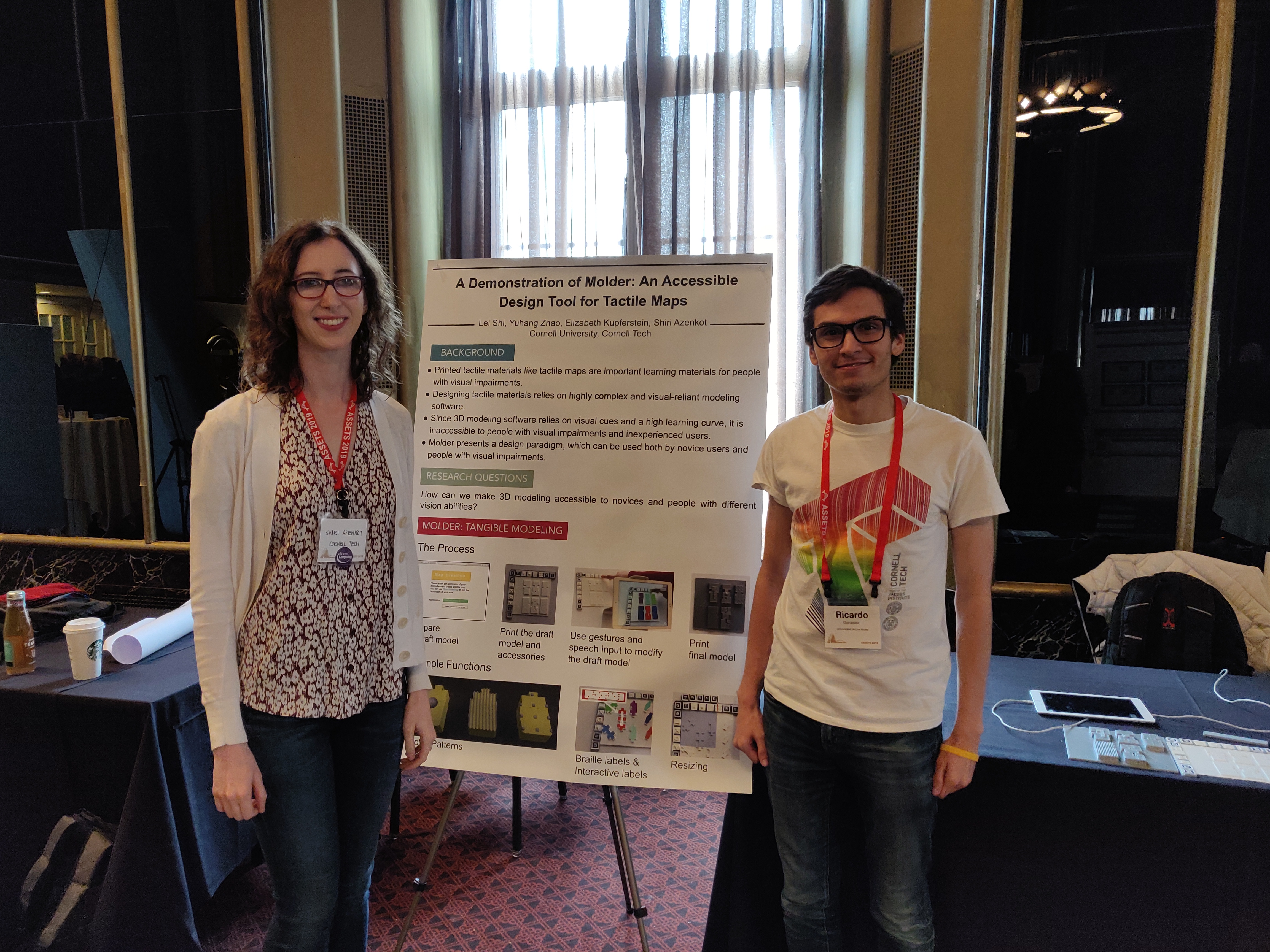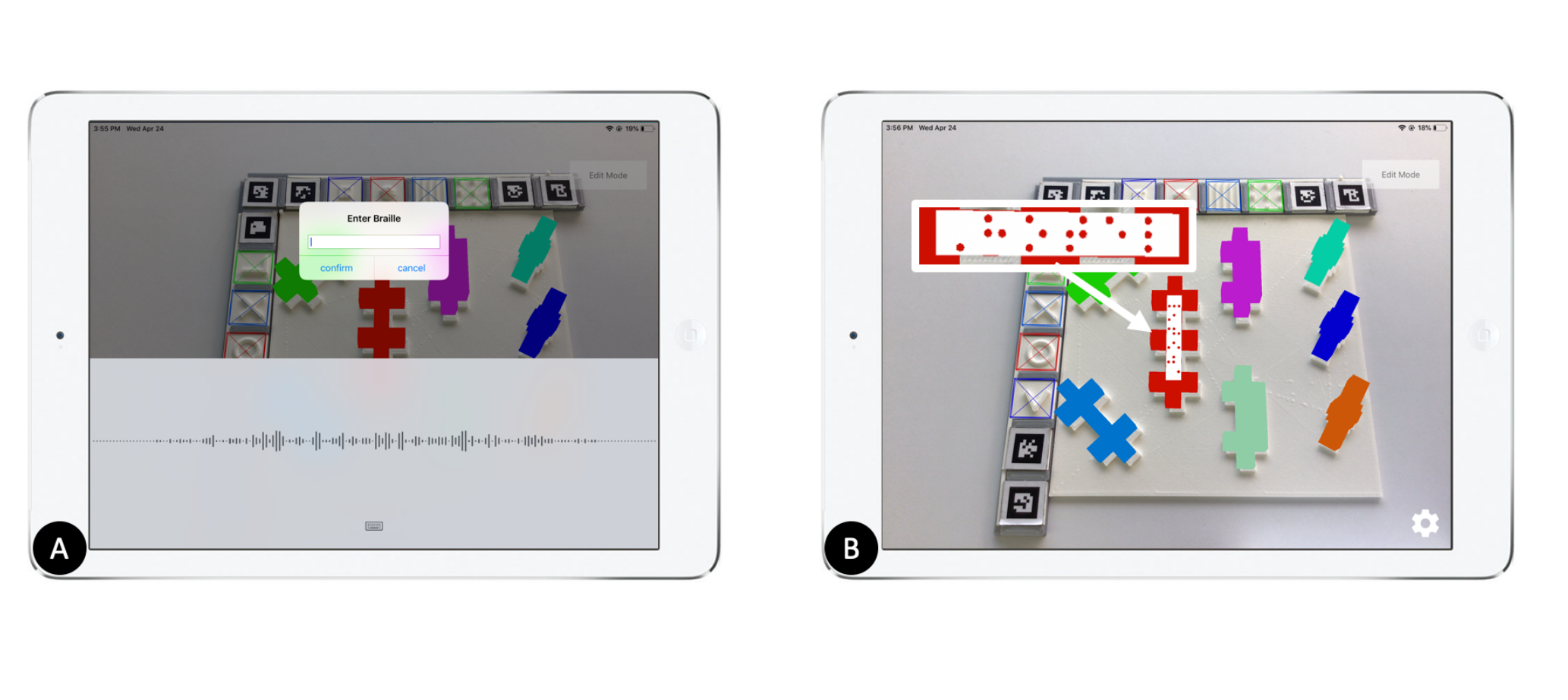Molder: An Accessible Design Tool for Tactile Maps

Authors: Lei Shi, Yuhang Zhao, Ricardo E. Gonzalez, Elizabeth Kupferstein, and Shiri Azenkot
Today, Orientation and Mobility (O&M) specialists and teachers are often responsible for designing tactile materials to teach their students. However, most of them do not have professional modeling skills, and many are visually impaired themselves. To address this issue, we designed Molder, an accessible design tool for interactive tactile maps, an important type of tactile materials that can help students learn O&M skills.
Molder provides a simplified design process and easy-to-learn functions. Molder contributes an interaction paradigm towards accessible modeling.
Abstract
Tactile materials are powerful teaching aids for students with visual impairments (VIs). To design these materials, designers must use modeling applications, which have high learning curves and rely on visual feedback. A designer uses Molder to design a map using tangible input techniques, and Molder provides auditory feedback and high-contrast visual feedback. We evaluated Molder with 12 participants (8 with VIs, 4 sighted). After a 30-minute training session, the participants were all able to use Molder to design maps with customized tactile and interactive information.
Preview

Related papers & publications
Presented on CHI2020, Molder: An Accessible Design Tool for Tactile Maps

